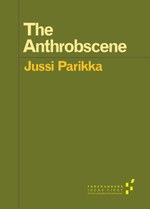New Criticals Review of Jussi Parikka's 'The Anthrobscene'
 The digital life is material and submerged, as much as it is immaterial and in the cloud. It is the navy and gold submarine cables set into the ocean bed. Digital life is the germanium and indium, the arsenid, silicon, tin, cobalt and silver needed to sustain it.
The digital life is material and submerged, as much as it is immaterial and in the cloud. It is the navy and gold submarine cables set into the ocean bed. Digital life is the germanium and indium, the arsenid, silicon, tin, cobalt and silver needed to sustain it.
Take a look at a cross-section of a submarine cable: polyethylene wraps around mylar, encasing steel, then aluminum, then polycarbonate, copper and petroleum jelly, in a series of concentric casings around optical fibers at the cable’s core.
From this cable, we could fractal outwards into the history of submarine communications networks as they were weighted down across the Pacific and Atlantic. Divers, leaping from special cable ships. That history spans two world wars, corporate espionage and government surveillance.
In a stunning essay-book titled The Anthrobscene, Jussi Parikka argues that our media era is fundamentally geophysical, that geology itself is a media resource, and that we need to understand media in terms of dynamic, accidental processes rather than as a library of static, solid objects.
Media theory demands a nonlinear and far more radical account of both materiality and time. In response, Parikka posits a new context, the anthrobscene, a play on the anthropocene, or the geological period started by humans. The context of the anthrobscene could potentially help us understand how our digital media – our devices, computers and networks – are inextricably tied to organic and inorganic materials and the hunt for energy.
Continue reading the review here.
By: NORA N. KHAN
Story Date: 2015-03-03T05:51:00+00:00



